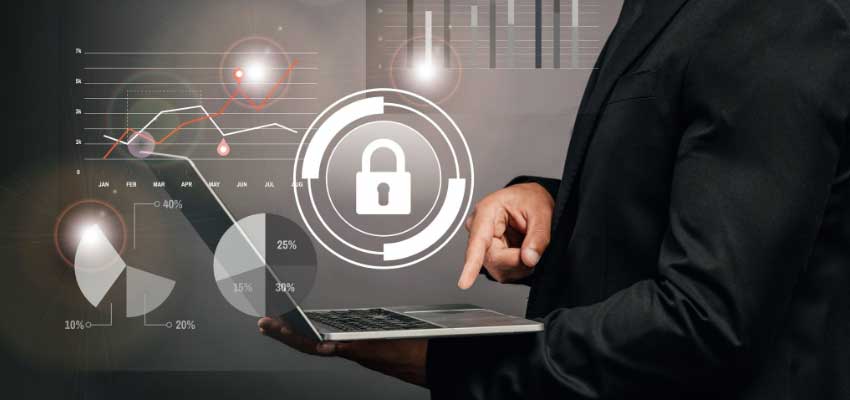Show:
How to Secure Your Hardware from Online Threats
The ubiquity of electronic devices in our environment today presents the need for security and safety for both your data and physical equipment. The threat of our data is strongly related to the dangers posed to hardware devices which are used to exploit the vulnerabilities specific to the function of such devices. This can include illegal access to your phones to sabotage of security devices installed in your home and private places. The following provides you with available control measures and practices to protect your physical assets from hardware-related threats:

1. Firewall
It doesn’t only provides enhanced network performance and connectivity for home and business use but it also offers a comprehensive measure of protection from various threats. Quality home firewalls can manage existing viruses, hacking, and spyware as well as capable of recognizing new threats to your assets. You can choose from a wide-array of devices that incorporate wireless interface and offer outstanding security for both small and large network configurations. When choosing a firewall it’s important to consider features and the reliability of the brand when it comes to added security.
2. Update Antivirus Software
Updating your antivirus software and other security applications is crucial in maintaining your system’s protection against newer and more sophisticated attacks. A vulnerable software can be exploited by cybercriminals to access your hardware and its specific functions. Software developers can also check your operating systems for entry points that a virus or malware can be used to access the computer. Microsoft has included this feature into their system so updating your OS also works the same as keeping your antivirus software up-to-date.
3. Strong Authentication
Passwords are reliable on some level but there are devices that require more than just entering a string of characters. Also, generated high-security passwords are almost impossible to remember causing a lot of inconvenience and a desk covered in Post-it notes. Although there are a lot of alternatives, they can sometimes be costly for an individual or to a small business. An acceptable compromise comes in the form of a multi-factor authentication. This can be employed to devices that hold very sensitive information or to valuable servers in the network.
You can combine the user’s password and tokens, barcodes, or fingerprint to establish a session with the device. However, it’s important to note that while it protects your hardware from unauthorized use, via the internet or other network, an insider can access your device while you’re away from it. So, although your hardware can’t be accessed without you or the other keys, it can still be vulnerable against irresponsible security practices like not locking your computer while you’re away or not scrutinizing emails.
4. LAN Segmentation
Detection systems on the network can be a useful tool to incorporate in your system’s defenses against unwarranted access. The challenge pose on this method comes in finding the right components. LAN sniffers are usually employed in network-based systems while host-based deploy agents to track and isolate intrusion. For the former, it can be easy to trace the connection of a single device but can be overwhelming when you’re finding choke points in a bigger network. You would want to put a sniffer on each LAN segment but it can be costly and annoying. The most practical method is to separate LAN networks into enclaves protected by a firewall where it logically connects to the network’s backbone. This is, however, only advisable for large corporations that handle a variety of data with different data sensitivity tranches.
5. Classification of Threat Agents
Classifying threats can help you identify the type of threat, the impact, and the asset that is potentially affected. Specifically for online threats, agents of these attacks can be clearly specified to their motivation and capabilities. Those who are classified as insiders would rarely use an external network to do the job while cyber criminals would employ social manipulation and virtual tools to gain access to the network:
- Cybercriminals
These are individuals or teams who employ a wide array of technical and social methods to commit malicious acts. They normally don’t have a specific entity or target, rather they victimize people on the basis of what platform they’re on, their behavior, and programs used. They are a danger to not only data but can also modify, disable, or steal assets, hijack devices or electronic components, intentional or unintentional damage or loss to property or valuable function, can cause undesired disruptions, and other implications with serious legal consequences.
If you or your company is a prime target for cybercriminals, then safeguarding your asset must be taken with equal care as with the data you’re handling.
- Online Hackers
Online hackers are not as bad as cybercriminals since some of them infiltrate the system to expose or find new ways to manipulate available tools and protocols. They use the external network to gain access to the internal system and would be a danger if they modify, steal, or damage your asset through their nefarious activities.
Updating software and installing reliable firewalls can help you deter online hackers from compromising your network and gaining access to your assets.
- Cyber Spies
Just as you’ve seen them on TV, cyber espionage is real and is one of the imminent threats for large corporations and leaders of the business. These individuals don’t necessarily damage or harm your hardware but they’ll hijack it to gain access to privileged information about your business. Unlike online hackers, they don’t only access your network through the internet but physically as well so it’s important that you have physical security to minimize hardware access.
It is crucial for any risk management process owners to be able to put measures where they can easily monitor and be aware of any threat that can emerge from both within and out of the system. Security systems have evolved over the years learning from painful lessons taught by notorious individuals. And although the physical security system of any establishment or office has become more sophisticated, it is not fully covering the entire network as devices can still be hi-jacked from various origins. The need of a hardware security system complements the physical and network security in catching and deterring would-be perpetrators of your valued assets.

 Return to Previous Page
Return to Previous Page








